
More than hot spices: Sichuan snack restaurants in Hong Kong offer a feast of flavours and friendship
- Sichuan food is famous for being super spicy, and its street snacks are not short of chillies, but its fans say it is also salty, sweet and tangy
- We look at three places offering Sichuan’s popular street snacks in Hong Kong

Outsiders often think of Sichuan cuisine, known as chuan cai, as only being hot and spicy.
“That’s a misperception,” says Zhong Yong, a Sichuan chef at Sijie Sichuan Cuisine in Causeway Bay. “Chuan cai is a mixture of spicy, salty, sweet and tangy.”
“Seasoning is the soul of chuan cai, affording every dish a distinctive voice and character,” adds restaurant manager Sam Lam Hin-yu, who helps his mother, the si jie (fourth daughter) the establishment is named after.
Lam says that all spices and seasonings used at the restaurant are imported directly from Sichuan.

“While making a dish, from cutting to plating, may take only a few minutes, preparing the chilli sauce takes more than a day,” says Lam.
Dozens of spices, including cinnamon, bay leaves, cloves and star anise, are fried in rapeseed oil until fragrant, before being filtered out. Sichuan chilli peppers infuse in the fragrant oil for 24 hours.
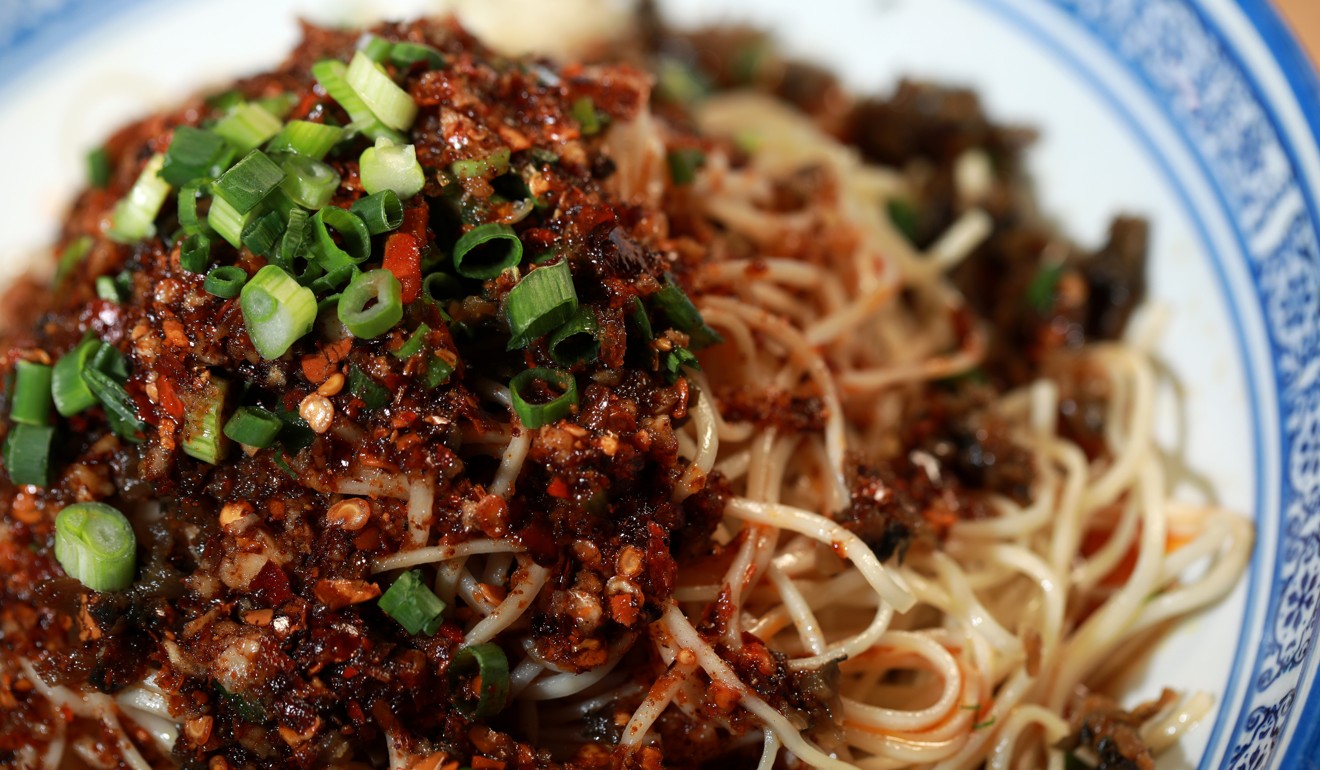
The chilli sauce is a pantry basic in the restaurant kitchen. “It goes into every spicy dish that we serve here. It is the sauce that imbues our dishes with colour, smell and flavour,” says Zhong.
The fragrant, spicy sauce features in the restaurant’s cold noodles, liang mian. “Liang mian can be found everywhere in Chongqing, and is best enjoyed on the go,” says Lam.
At Sijie, the noodles are presented on a plate, but in Chongqing, they are commonly sold from a mobile food cart, in a plastic or paper bowl.
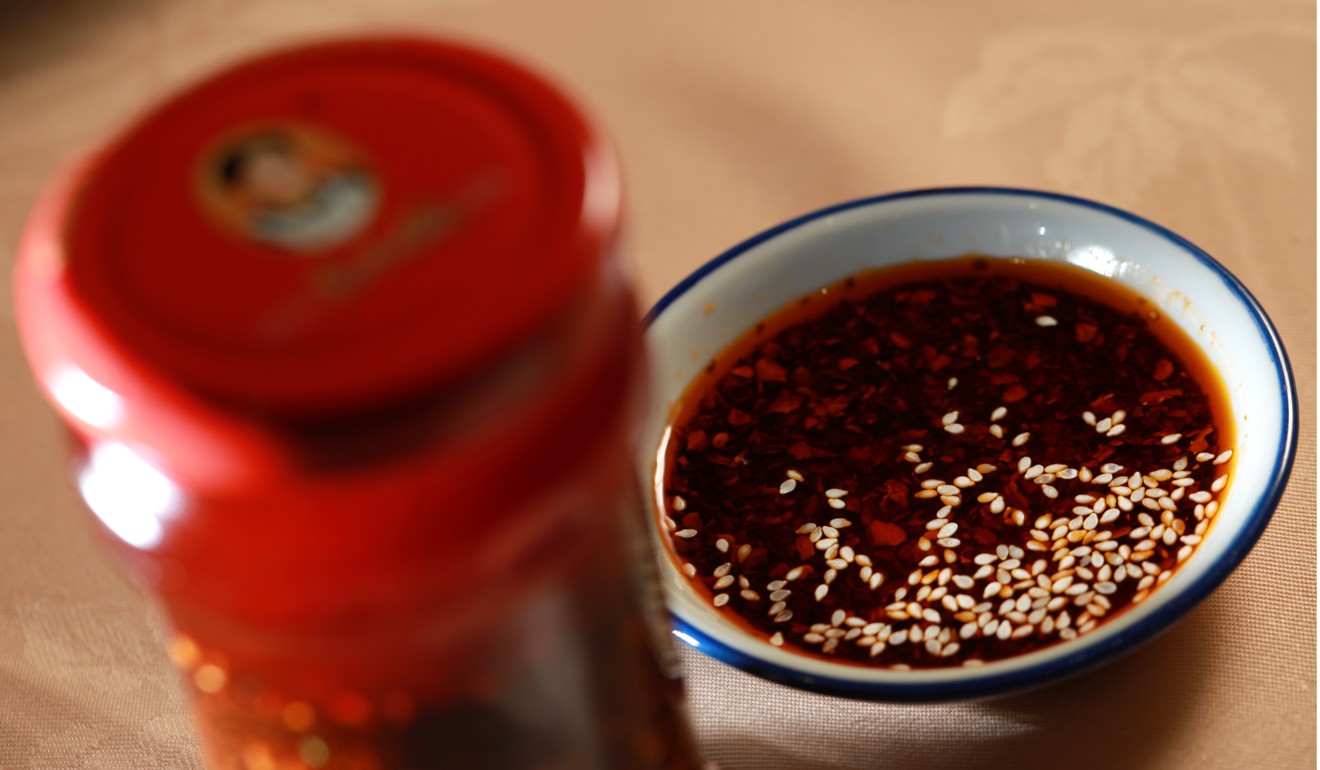
Another common Sichuan street food dish also popular at Sijie is suan ni bai rou, or sliced pork with garlic sauce.
Zhong notes that the choice of meat is vital. “We use er dao rou. It is the ring of cuts surrounding the pig’s tail. It’s the next cut after the butcher chops the tail off,” he says. The fat and lean layered slices are boiled in water, smothered in chilli oil and seasoned with vinegar, sesame oil and soy sauce, before crushed garlic and pieces of spring onion are added.
Other Sichuan street snacks served at Sijie include liang xia (cold shrimp), a dessert that has nothing to do with the crustacean, says Lam. Glutinous rice flour is mixed with water into a paste which is dripped into boiling water through a ladle with holes in it. The rice flour noodles resemble shrimp (hence the name) and are served with brown sugar soup with hawthorn, candied winter melon, raisins, peanuts and sesame. Lam adds: “It’s a treat in the stifling hot summer.”
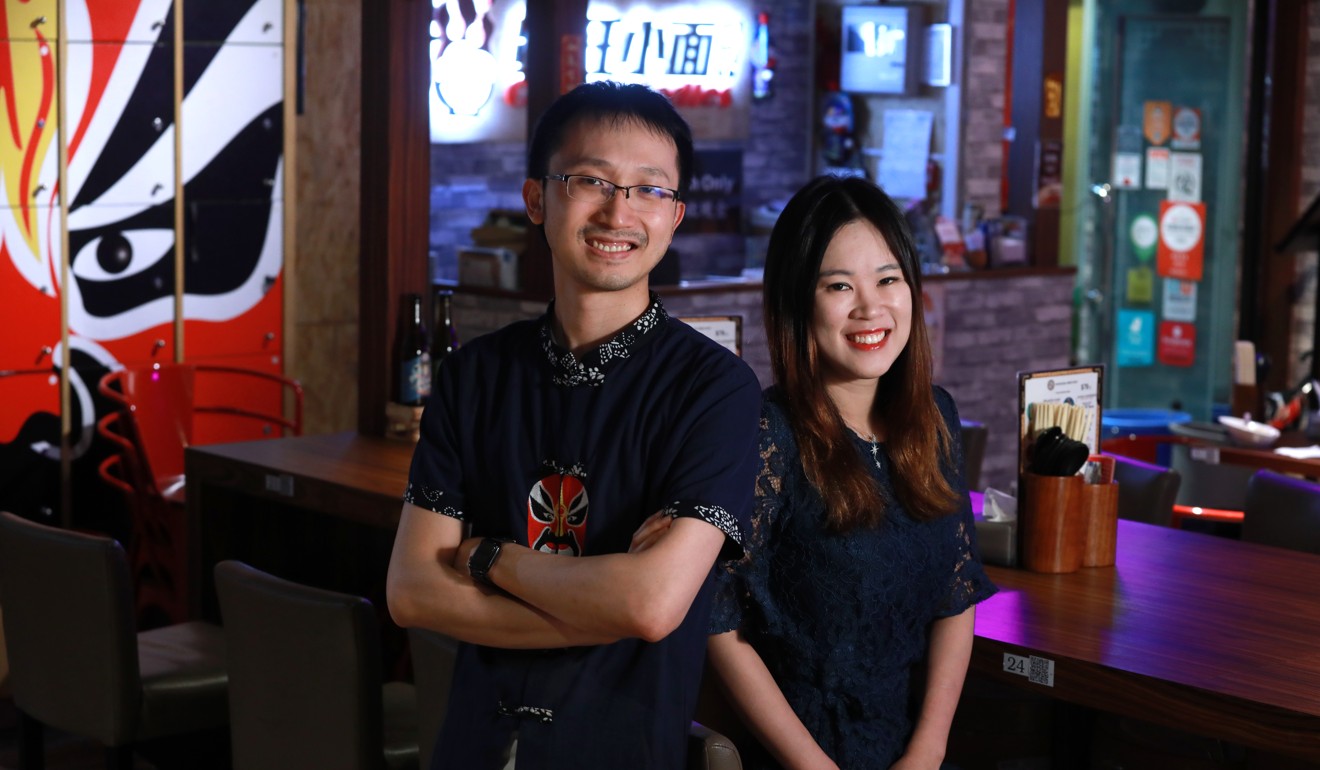
Crazy Noodles in Central is another shop specialising in Sichuan street food. It was opened by Hongkonger Paul Lau Lap-pun, who gives credit his Chengdu-born wife for the authentic Sichuan flavour.
“She is my personal taster and food critic,” Lau says. “She is picky about her hometown food, but her satisfaction is the only benchmark for deciding how close my recipes are to the Sichuan versions.”
Fu qi fei pian (husband and wife lung slices) started as street food in Sichuan. It’s made with beef and offal – tongue, tripe and heart – marinated in a spicy sauce.
Chuan chuan – skewered meat and vegetables – a common dish across China, originated in Sichuan.

“In the days when meat was a luxury, people wouldn’t let any part of an animal [go to waste]”, says Lau. “For example, when they got a chicken, they kept every organ from cockscomb to liver to gizzard.” Vendors skewered and cooked these bits and pieces and charged customers for how many sticks they picked.
In Sichuan, people eat the skewers cold or tepid, notes Lau, because street vendors don’t have stoves to keep the broth warm. However, Lau serves the skewersin a hotpot, which is popular with Hong Kong diners.
Two favourite skewers are chicken claw tendons and chicken skin. “It’s taxing to pluck out the single strip of tendon from each claw without breaking it,” says Lau. The tendon is loved for its rubbery and slippery texture, while the chicken skin is best to suck up the chilli sauce.
Sichuan street food made from innards depends on spices to mask the gamy pungency. “I made a futile attempt to find particular Sichuan spices or alternatives in Hong Kong,” says Lau.
“Even though some supplies are not bad, they are not on a par with the Sichuan samples. The spices’ aroma or pungency diminish over time and we don’t even know how long the spices have been kept in storage before I get them.”
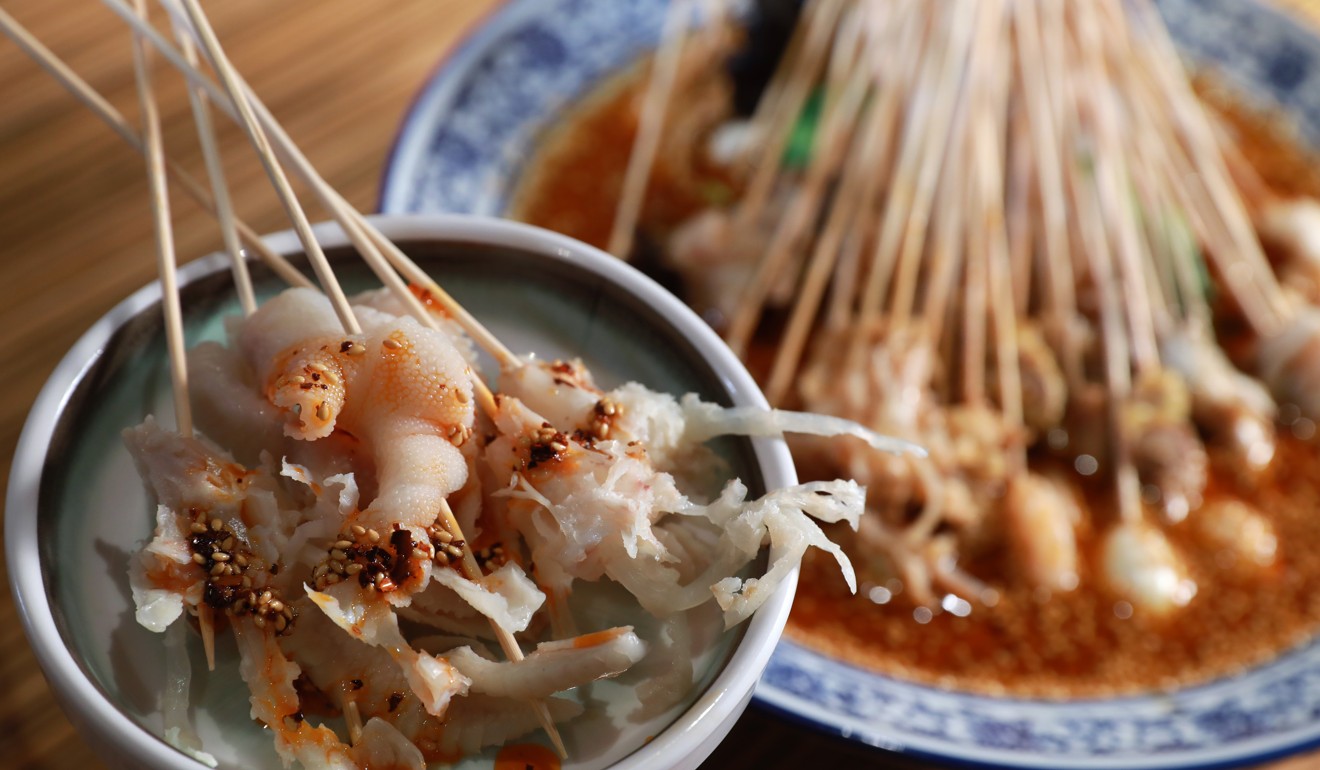
A fiery and tongue-numbing feast needs something cool and refreshing to wash it down. An ingenious invention in Sichuan is a sweet soup called bingfen, (ice powder). The main ingredient of the translucent, jellylike soup is made from the seeds of a plant in the nightshade family.
The seeds – about the size of a chia seed – are extracted, rinsed and pulverised, then mixed with water. An array of toppings is scattered over it for extra flavour. Traditional toppings include fried black sesame, crushed peanuts, hawthorn cake, raisin and lao zao (fermented glutinous rice).
Lau says: “Interestingly, in Sichuan, people prefer to suck the sweet soup with a straw. In Crazy Noodles, we serve it in bowls.”

Chuan Po Po is too small to be called a restaurant. Wedged between other food and drink stalls with more decent shopfronts, the inconspicuous store is popular in Tsim Sha Tsui.
“We’re inundated with orders and picking up calls for lunchtime deliveries from Monday to Friday,” says Kent Wong, who runs the business with his wife. People start queuing at noon every day, mounds of lunchboxes are loaded on the cart, and the staff are constantly making deliveries to schools and office buildings nearby.
In Chongqing “chuan-chuan culture” is a way of life. People love to eat it with a group of friends. Wong says: “In Chongqing, customers are handed a pot of chilli oil stock before hand-picking their ingredients from a refrigerator. Then they blanch their [skewered ingredients] in the stock and enjoy.”
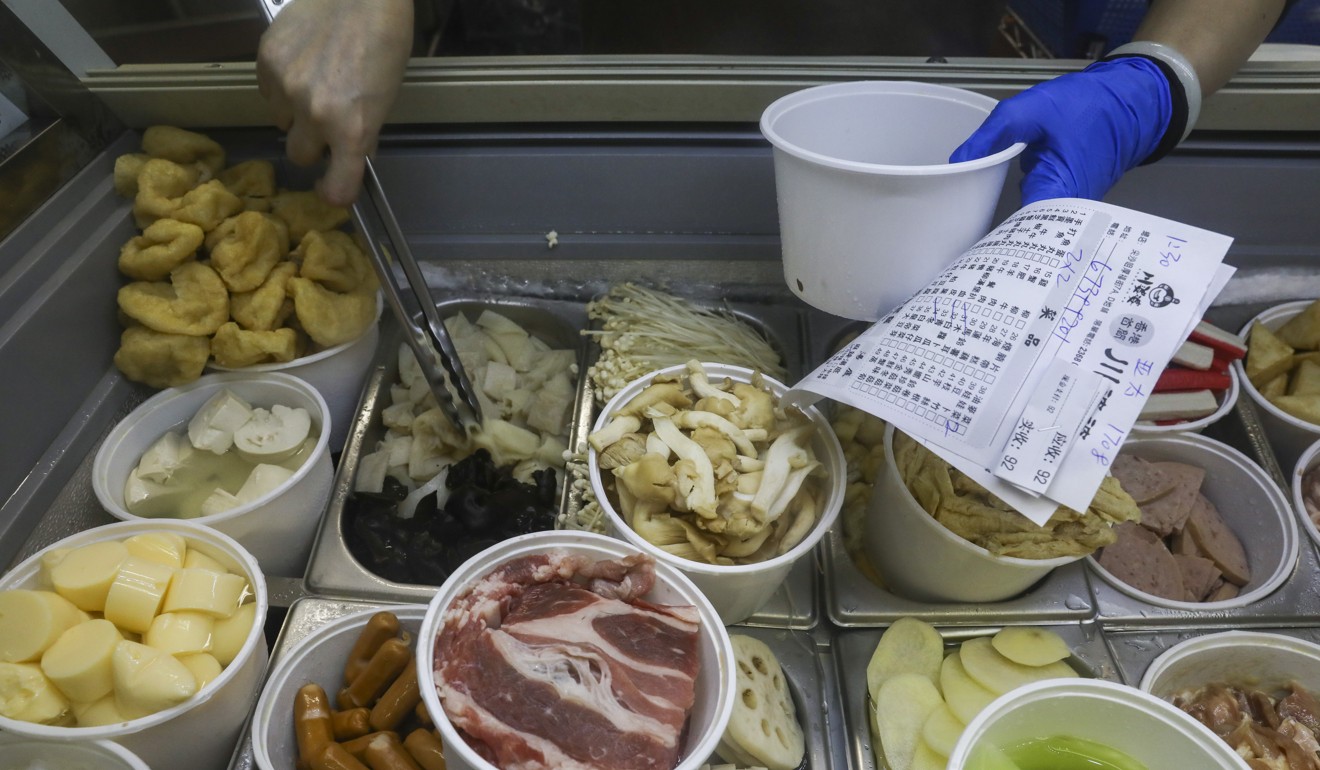
“Unlike Chinese foodies who would buy in bulk, Hong Kong people often buy sparingly, often one or two skewers, particularly first-timers who are wary of foreign food,” Wong says. So he set a minimum purchase of four skewers, and added a variety of noodle choices to make it more filling.
Wong says: “We got rid of the traditional bamboo sticks; we cook the ingredients in chilli stock and serve them in bowls. Hong Kong diners are so environmentally conscious.”
Wong added some ingredients to accommodate the local palate. Unsurprisingly, the bestsellers are the localised ingredients such as fish balls, beef balls, luncheon meat and fish skin dumplings.
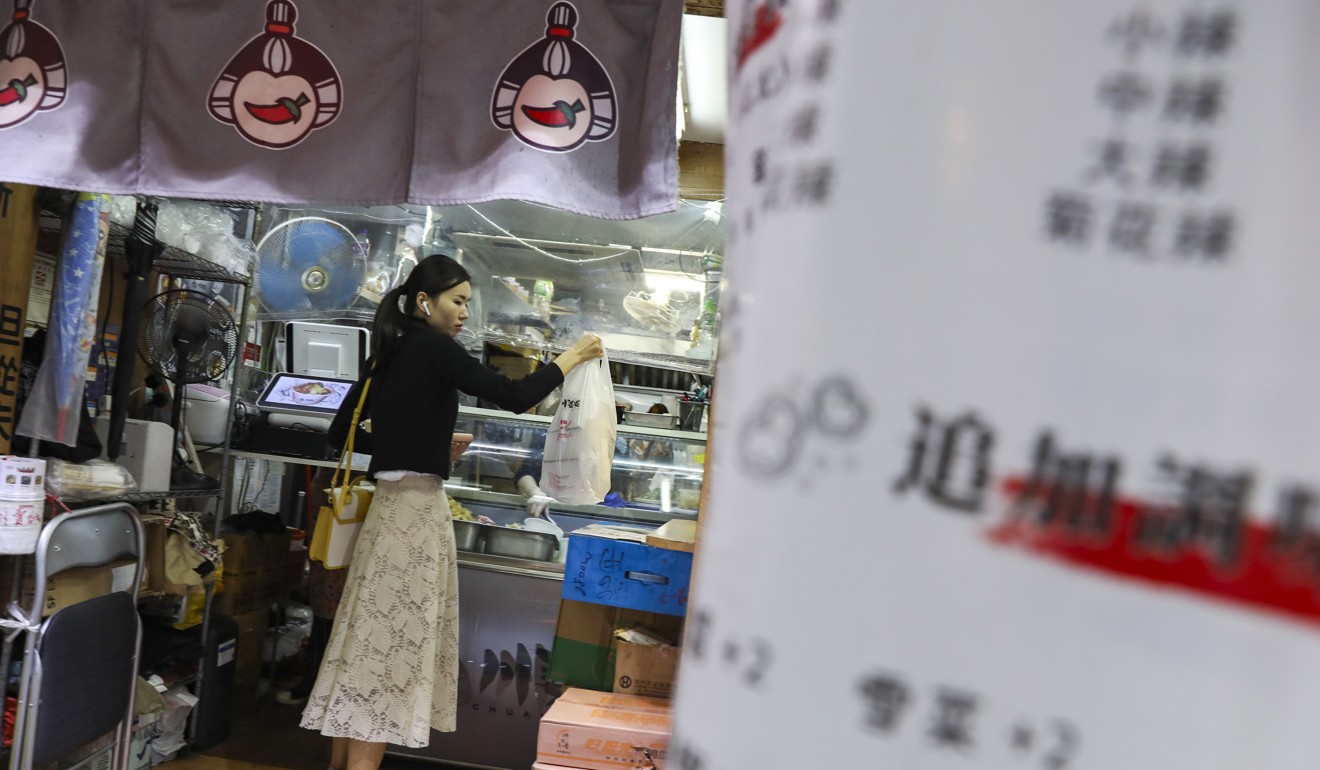
The only thing that Wong can’t wrap his head around is the remarkably slow business in the late evening. “It’s probably because workers from the nearby building are off work, or date in big restaurants.” But in Sichuan, eating street food is an integral part of socialising.
“I think the cultures [of Sichuan and Hong Kong] are slightly different. But anyway, I’ll still close my stall at 11pm or later, to satisfy the grumbling stomachs before [customers] go to bed.”
Sijie Sichuan Restaurant
10/F, Bartlock Centre, 3 Yiu Wa Street, Causeway Bay, tel: 2802 2250
Crazy Noodles⾯面
1/F Kai Tak Commercial Building, 66-72 Stanley Street, Central, tel: 2311 3905
Chuan Po Po 川婆婆
7D Hau Fook Street, Tsim Sha Tsui, tel: 2368 0268